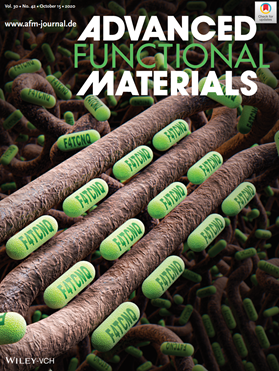- About Ajou
- Admission
- Academics
- Research
-
International
International
- Campus Life
-
News and Event
News and Event
- AUT
Major Research Result
NEW Combine and Conquer: Fusing Two Doping Techniques to Enhance Conjugated Polymers
- 2021-02-03
- 8861
New hybrid strategy could unlock the use of organic compounds to convert body heat into electricity for portable devices
Although conjugated polymers are promising materials for many electronic applications, increasing their conductivity enough for efficiently converting heat to electricity has been tricky. Now, scientists from Ajou University, Korea, have devised a hybrid strategy that combines two existing doping methods to obtain unprecedented results. This could unlock the use of these polymers to power portable electronic devices and sensors using body heat.
Thermoelectric conversion is a highly popular unconventional energy harvesting technique; theoretically, it allows for powering portable electronic devices and sensors using nothing but body heat. Many researchers have high hopes on conjugated polymers (CPs), special arrangements of long organic molecules that are used in flexible electronics, transistors, and solar cells. However, there are no effective methods to make CPs conductive enough for high efficiency thermoelectric energy conversion.
Scientists at Ajou University, Korea, have recently pioneered a novel strategy that demonstrates extremely promising results. In their study, featured on the front cover of the latest issue of Advanced Functional Materials (Volume30, Issue42 2004598)
, they combined two of the best known methods for enhancing the conductivity of CPs into “hybrid doping”.

This image, selected as the cover for Advanced Functional Materials, shows long strands of conjugated polymers doped to the max with F4TCNQ, a standard organic dopant
Photo courtesy: Wiley Online Library
In materials science, doping is the process of intentionally adding impurities to a material to enhance certain properties. For CPs, existing doping methods are “mixture blending” and “sequential doping.” In mixture blending, the polymer and the dopant are mixed in a solution, which is then spin coated to produce the doped CP. However, the amount of dopant that can be safely used without compromising the polymer structure is very small. Sequential doping, meanwhile, involves spin coating the CP first and then dipping it into a dopant solution. With this approach, the dopant can only penetrate the layers of the polymer at amorphous regions, leaving the crystalline areas undoped.
The combined strategy is a straightforward fusion of both techniques; a pre-doped CP produced through mixture blending is dipped into a dopant solution. “Hybridizing both processes effectively maximizes the degree of doping of the CPs, yielding maximum conductivity without sacrificing other properties,” Professor Jong. H. Kim, who led the study, explains. The scientists compared CPs produced using each method in terms of their microscopic structure, optoelectrical properties, stability, and thermal conversion performance; the CPs processed with hybrid doping came out on top in all relevant areas.
Excited about the results, Professor Kim comments: “Hybrid doping let us optimize the thermal energy conversion efficiency of existing and new CPs. In turn, this will eventually allow us to harvest waste heat from various sources, including the human body, to power all types of portable electronic devices and Internet-of-Things sensors.” This study is a huge step in the development of eco-friendly functional materials, and highly doped CPs will surely find their way into the electronic devices of tomorrow.
Reference
Authors: | Sang Eun Yoon1, Yeongkwon Kang2, Gyeong G. Jeon1, Dohyeon Jeon3, Sang Yeon Lee4, Seo-Jin Ko5, Taekyeong Kim3, Hyungtak Seo4, Bong-Gi Kim2, and Jong H. Kim1* |
Title of original paper: | Exploring Wholly Doped Conjugated Polymer Films Based on Hybrid Doping: Strategic Approach for Optimizing Electrical Conductivity and Related Thermoelectric Properties |
Journal: | Advanced Functional Materials |
DOI: | 10.1002/adfm.202004598 |
Affiliations: | 1Department of Molecular Science and Technology, Ajou University 2Department of Organic and Nano System Engineering, Konkuk University 3Department of Physics, Hankuk University of Foreign Studies 4Department of Materials Science and Engineering and Department of Energy Systems Research, Ajou University 5Division of Advanced Materials, Korea Research Institute of Chemical Technology |
*Corresponding author’s email: jonghkim@ajou.ac.kr
About Ajou University
Founded in 1973, Ajou University has quickly grown to become one of the top universities in the Republic of Korea. With over 15,000 students and 50 research centers in diverse fields, Ajou University partakes in the largest national research and graduate education project funded by the Korean Ministry of Education. In line with its recently reformed vision, Ajou University’s goal is to change society by connecting minds and carrying out high-impact research to improve the welfare of people in and outside Korea.
Website: https://www.ajou.ac.kr/en/index.do
About the author
Jong H. Kim (Jong Hyun Kim) is an Associate Professor of the Department of Molecular Science and Technology and the Department of Applied Chemistry and Biological Engineering at Ajou University. His group is developing new approaches to fabricate high-efficiency energy harvesting devices, including thermoelectric and photovoltaic devices. Professor Kim’s research group is also developing high-efficiency doping processes for transparent and stretchable electrodes for solar cells and NIR photodetectors. Before joining Ajou University, Jong H. Kim completed his postdoctoral training at Alex K.-Y. Jen’s lab at the University of Washington, USA. In 2011, he received a PhD in the Department of Materials Science and Engineering from Seoul National University, Korea.
